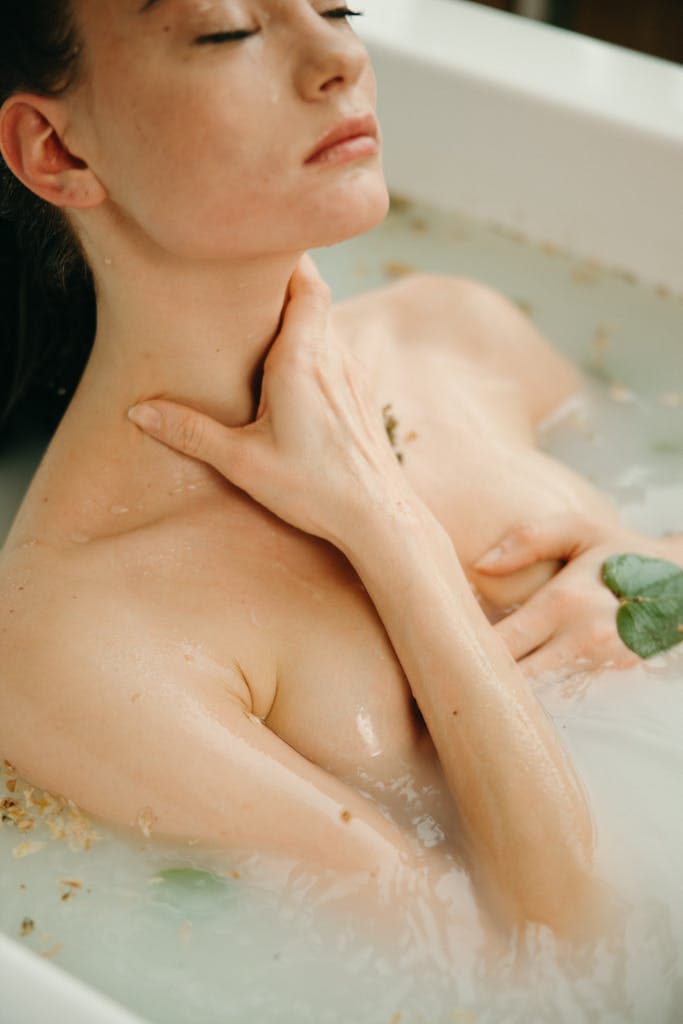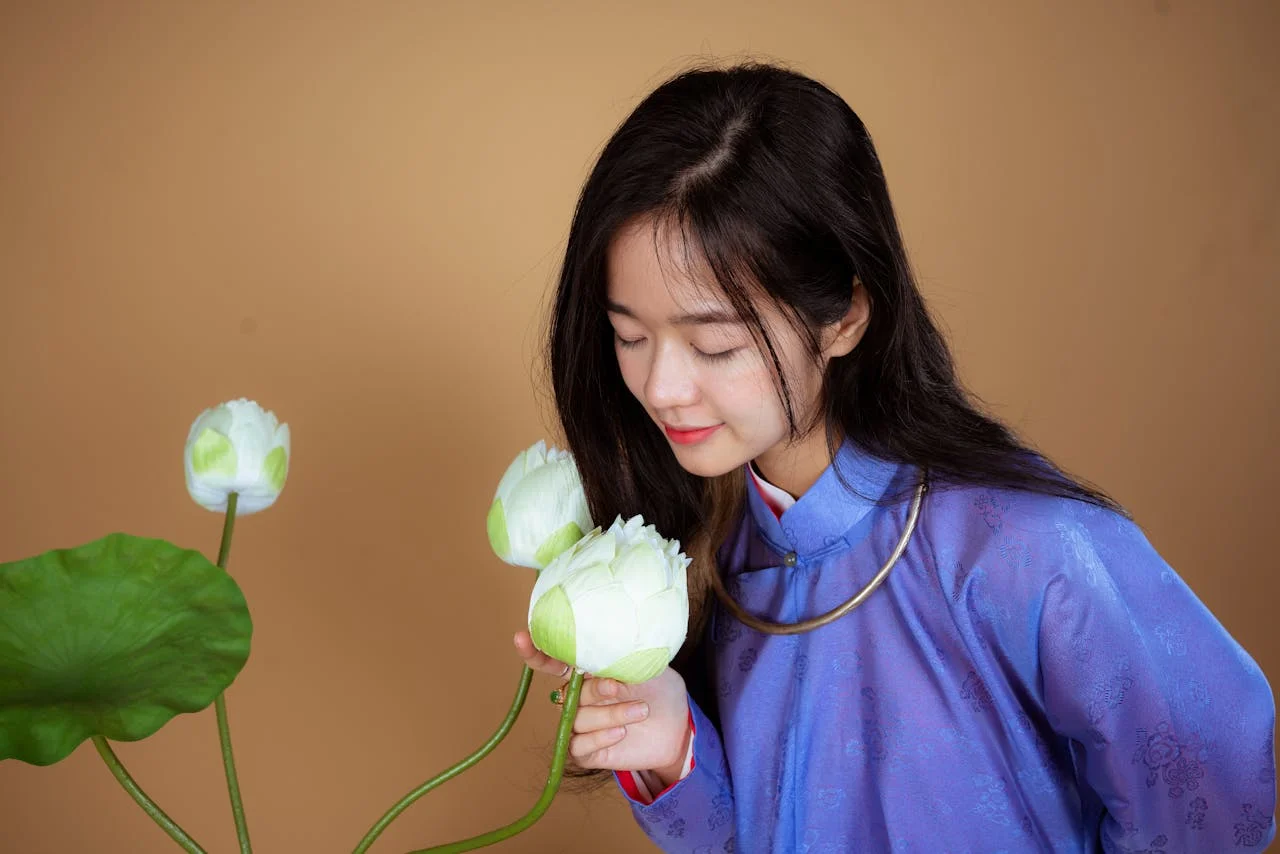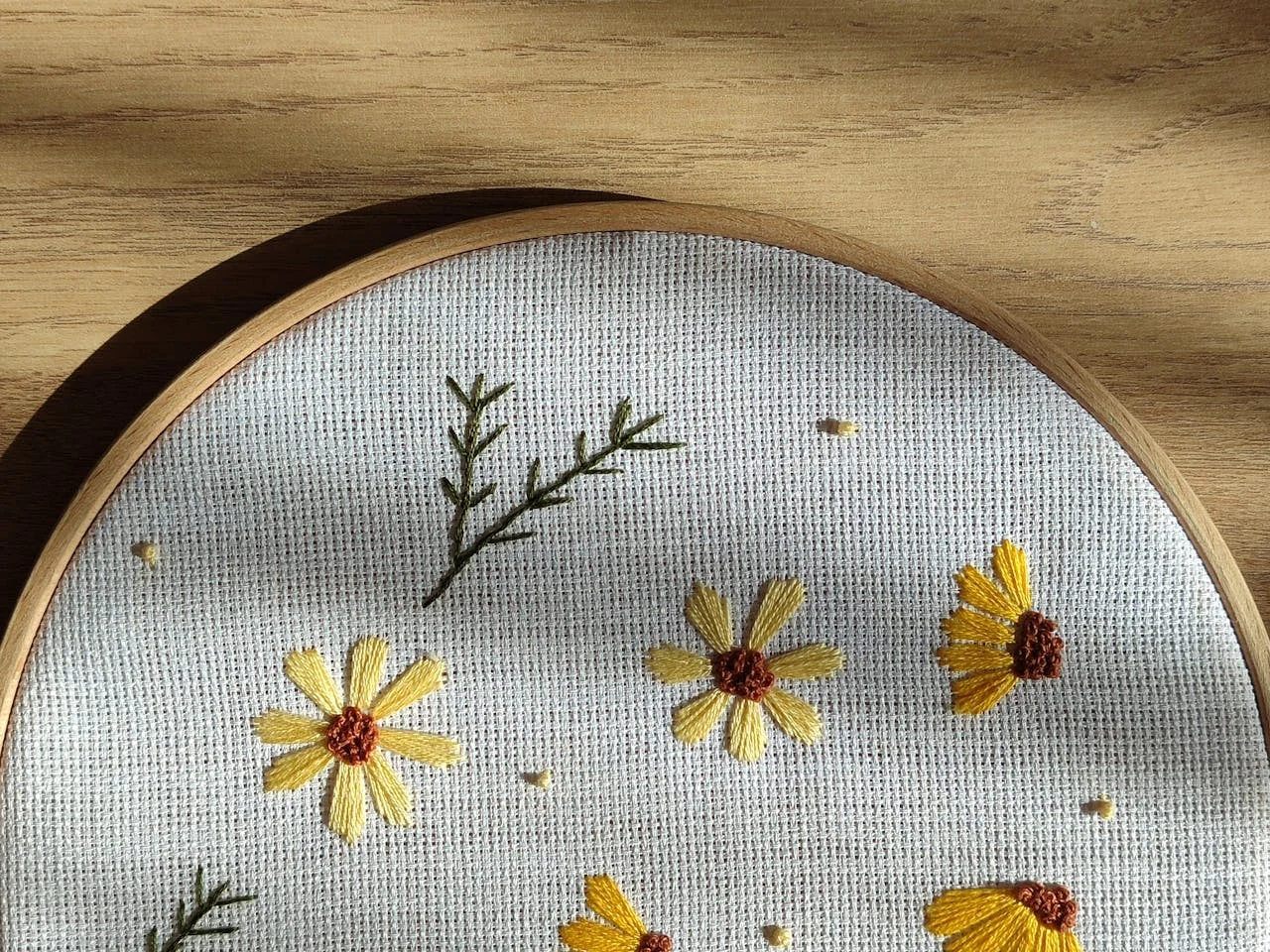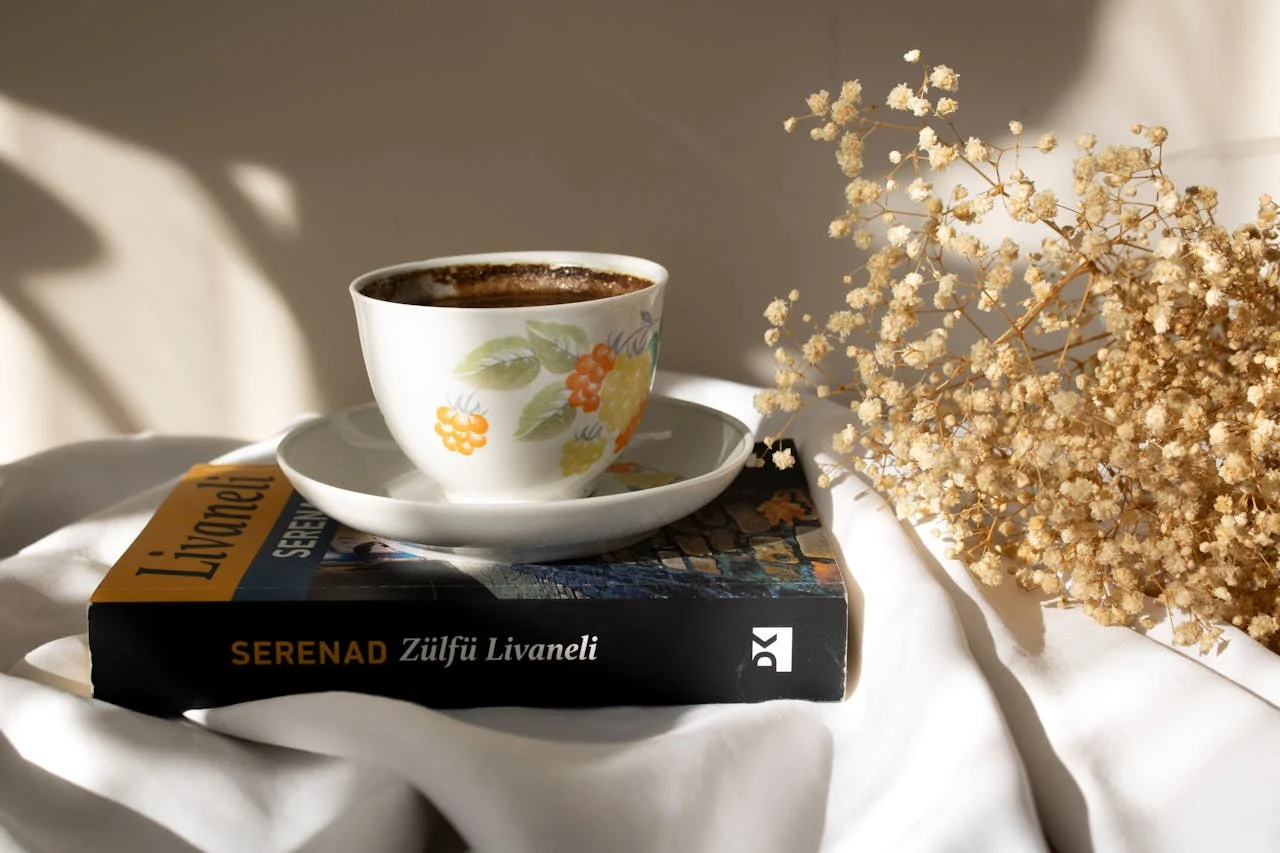
Okay fam, let me tell you something. I used to think self-care was just face masks and bubble baths, but then I discovered Japanese wellness rituals and honestly? My whole game changed. We’re talking about a culture that’s been perfecting the art of mindful living for literally thousands of years, and the best part is you don’t need to book a flight to Tokyo to experience it.
These aren’t your basic Sunday night routines either. Japanese self-care is like that friend who always has their life together, you know? Everything is intentional, beautiful, and designed to make you feel like you’re living in your own personal spa retreat. And trust me, after trying these rituals, you’ll wonder why you ever settled for anything less.
1. Morning Rajio Taiso (Radio Exercises)
Picture this: it’s 6:30 AM in Japan, and millions of people are doing synchronized exercises to music on the radio. Sounds like something out of a feel-good movie, right? But here’s the thing, this isn’t just exercise, it’s a gentle way to wake up your body and mind together.
I started doing this after reading about it online, and now my mornings feel completely different. You literally just follow along with simple stretches and movements for about 10 minutes. No crazy equipment needed, just you and some light movements that make your joints say “thank you” instead of creaking like old floorboards.
The best part? You can find the exercises on YouTube, and even if you don’t speak Japanese, the movements are so intuitive that you’ll catch on faster than you learned TikTok dances. My neighbor probably thinks I’m weird doing arm circles in my pajamas, but honestly, I’ve never felt more energized in the morning.
2. Ofuro (The Art of Bathing)

Forget everything you know about baths. In Japan, bathing isn’t just about getting clean, it’s a whole ceremony that would make your spa jealous. We’re talking about turning your bathroom into a sanctuary where stress goes to die.
First, you clean yourself completely before getting in the tub. I know, I know, it sounds extra, but stay with me. Then you fill your tub with water that’s almost too hot to handle, around 104°F if you want to get technical about it. Add some mineral salts or a few drops of hinoki (Japanese cypress) oil if you can find it, and suddenly your bathroom smells like a forest after rain.
Here’s where it gets really good though. You soak for exactly 20 minutes, no phone, no distractions, just you and the water. I’ve been doing this for months now, and it’s like meditation but warmer and way more relaxing. Some nights I swear the hot water literally melts the stress right out of my shoulders.
3. Gaman (Endurance with Dignity)
This one’s going to sound weird at first, but hear me out. Gaman is basically the practice of putting up with difficult things without complaining, and it’s actually incredibly freeing once you get the hang of it.
It’s not about being a doormat or anything like that. It’s more like choosing your battles wisely and finding peace in accepting things you can’t control. Like when your coffee order gets messed up, instead of getting all worked up, you just roll with it. When traffic is absolutely crickets, you use the time to listen to a podcast instead of honking like a maniac.
I started practicing this during my commute, and honestly? My blood pressure probably dropped 20 points. There’s something powerful about realizing you don’t have to react to every little annoyance life throws at you. It’s like having a secret superpower that keeps you calm when everyone else is losing their minds.
4. Shinrin-yoku (Forest Bathing)

Before you ask, no, this doesn’t involve actual bathing in the forest, although that would be pretty wild. Forest bathing is basically the practice of immersing yourself in nature mindfully, and it’s backed by actual science that proves it reduces stress hormones.
You don’t even need a forest for this, which is perfect because not all of us live near a magical woodland. A park works, your backyard works, heck, even sitting under a single tree can work if that’s what you’ve got. The key is to engage all your senses intentionally.
When I do this, I spend at least 30 minutes just being present with nature. I’ll touch tree bark, listen to birds, smell flowers, watch clouds move across the sky. It sounds simple, but after living most of my life with my face glued to screens, this feels revolutionary. Last week I spent an hour in my local park and came home feeling like I’d just had the best therapy session ever.
5. Zazen (Seated Meditation)
Meditation used to intimidate the heck out of me. Like, how do you just sit there and think about nothing? But zazen is different because it’s not about emptying your mind completely, it’s about sitting with whatever comes up without judgment.
You sit in a comfortable position, ideally facing a wall, and just breathe. When thoughts pop up, and they will, you acknowledge them like “oh hey, anxiety about tomorrow’s meeting” and then let them float away like clouds. No forcing, no struggling, just gentle awareness.
I do this for 15 minutes every evening now, and it’s honestly become my favorite part of the day. It’s like giving your brain permission to just exist without having to solve everything all at once. Some days my mind is busy as a bee, other days it’s quieter, and both are perfectly okay. The point isn’t to be perfect at it, the point is just to show up.
6. Ikigai Reflection
Ikigai is your reason for being, your “why I get up in the morning” purpose. But here’s what nobody tells you, you don’t have to have this figured out at 25 or even 45. It’s something you can explore gently through regular reflection.
I started keeping an ikigai journal where I write about what made me feel most alive that day. Sometimes it’s big stuff like helping a friend through a tough time, sometimes it’s tiny stuff like making the perfect cup of coffee. The pattern that emerges over time starts showing you what really matters to you.
This isn’t about finding your one true calling and dedicating your life to it. It’s more about noticing what brings you joy, what you’re good at, what the world needs, and what you can actually make a living doing. The intersection of these things is where the magic happens, but it takes time to discover. Be patient with yourself, this isn’t a race.
7. Wabi-Sabi Appreciation
Wabi-sabi is probably my favorite Japanese concept because it’s basically permission to find beauty in imperfection. In a world that’s constantly telling us to be flawless, this philosophy is like a warm hug for your soul.
It’s about appreciating the crack in your favorite mug, the way morning light hits your messy desk, the imperfect symmetry of flowers in a vase. Instead of constantly trying to fix and improve everything, you learn to see the beauty in things as they are, including yourself.
I practice this by taking daily photos of “imperfect” beautiful things around me. A wilted flower, worn book pages, my cat sleeping in a ridiculous position. It’s trained my eye to see beauty everywhere instead of just in Instagram-worthy moments. Now when I look in the mirror, instead of immediately focusing on flaws, I try to appreciate the whole picture, imperfections and all.
8. Omotenashi (Mindful Hospitality)

This one’s about treating yourself with the same care and attention you’d give to an honored guest. When’s the last time you prepared a meal for yourself with the same love you’d put into cooking for someone special?
Omotenashi means anticipating needs and creating experiences that feel effortless and beautiful. For yourself, this might mean setting the table nicely even when you’re eating alone, arranging flowers just because, or making your bed in the morning as a gift to your future tired self.
I started doing this by treating Sunday mornings like I was hosting my best friend for brunch. Nice plates, cloth napkins, flowers on the table, music playing softly. It sounds fancy, but it only takes an extra five minutes and makes ordinary moments feel special. Now I actually look forward to quiet meals alone instead of just wolfing down food while scrolling my phone.
9. Mindful Tea Ceremony (Simplified)

You don’t need to study for years to bring the meditative quality of tea ceremony into your daily routine. The essence is about being completely present with each step of preparing and drinking tea.
Choose a tea you actually enjoy, not just whatever’s lying around. Heat water to the right temperature for your specific tea, it matters more than you think. Pour slowly, breathe in the steam, notice the color as it steeps. When you drink, actually taste it instead of just using it as caffeine delivery.
I do this every afternoon around 3 PM when my energy usually crashes. Instead of reaching for another coffee, I make tea mindfully and it’s become this little meditation break that resets my whole day. My coworkers probably think I’m being extra, but honestly, those 10 minutes of tea meditation have become sacred to me.
10. Decluttering with Intention
Japanese decluttering isn’t just about Marie Kondo-ing your closet, though she’s definitely onto something. It’s about surrounding yourself only with things that serve a purpose or bring you genuine joy.
Start small, maybe just your nightstand or desk drawer. Pick up each item and really consider whether it adds value to your life or just takes up space. Keep things that make you smile when you see them, donate things that are useful but not meaningful to you, and toss things that serve no purpose at all.
I did this with my bedroom last month, and the difference is incredible. Everything I see when I wake up now either serves a function or makes me happy. No random clutter, no stuff I keep meaning to deal with, just intentional objects in their proper places. It’s like my space can finally breathe, and so can I.
11. Seasonal Mindfulness
Japanese culture celebrates the subtle changes of each season in ways that most of us completely miss. It’s about noticing the first cherry blossom, the way light changes in autumn, the particular quiet of winter mornings.
You can practice this by choosing one thing to observe about the current season each day. Maybe it’s the angle of afternoon sun, the sound of rain, the smell of leaves, or the way people dress differently. Keep a seasonal journal or just make mental notes.
This practice has made me realize how much I used to live on autopilot. Now I notice when the trees start budding, when birds change their songs, when the air feels different. It connects you to natural rhythms that our indoor, climate-controlled lives usually block out. Plus, it gives you something beautiful to focus on instead of just the daily grind.
12. Evening Gratitude Ritual

End each day by acknowledging three specific things you’re grateful for, but here’s the Japanese twist, focus on small, often overlooked moments rather than big obvious stuff.
Instead of “I’m grateful for my family,” try “I’m grateful for the way my partner laughed at my terrible joke this morning.” Instead of “I’m grateful for my health,” try “I’m grateful that my body carried me through a long day without complaint.” The specificity makes the gratitude feel more real and present.
I write these in a small notebook I keep by my bed, and reading back through old entries is like having a collection of tiny treasures. On rough days, I flip through and remember all these little perfect moments I would have forgotten otherwise. It’s changed how I pay attention during the day too, because part of me is always noticing things that might make the gratitude list later.
Look, I’m not saying you need to do all of these every day, that’s a recipe for burning out on self-care entirely. Pick one or two that speak to you and try them for a week. See how they feel, adjust them to fit your life, make them your own.
The beauty of Japanese self-care isn’t about perfection or following rules exactly. It’s about bringing more intention, beauty, and mindfulness into ordinary moments. And honestly? We could all use a little more of that these days.
Your future self will thank you for taking the time to care for yourself this intentionally. Trust me on this one.





Pingback: 12 Morning Rituals That Make You Feel Like Royalty